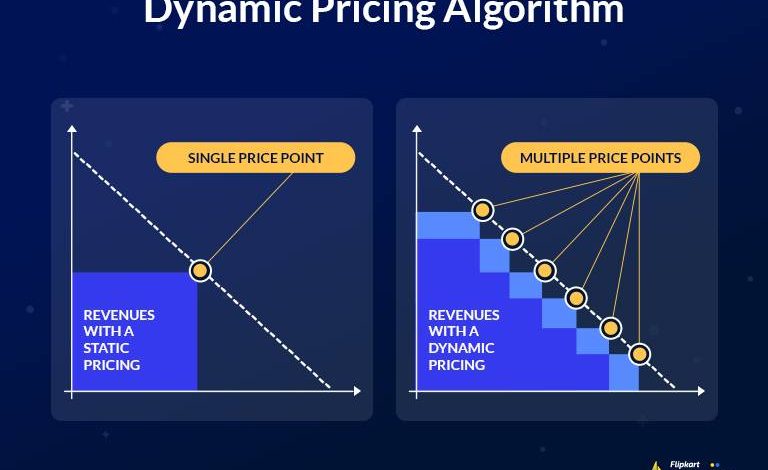Dynamic pricing reshapes modern commerce

Dynamic pricing, a term that has surged into business conversations in recent years, continues to transform the way companies approach their pricing strategies. In a world that thrives on real-time data and rapid decision-making, dynamic pricing is no longer just a tool for e-commerce giants but an essential strategy for all businesses looking to stay competitive. This article takes a deeper look at what dynamic pricing means, how it works, and its impact across industries.
What is dynamic pricing?
Dynamic pricing refers to a flexible pricing strategy where the price of a product or service can change in response to various real-time factors. Unlike traditional, static pricing, which remains fixed regardless of external influences, dynamic pricing shifts based on conditions such as market demand, competitor actions, time of day, and even customer behavior. The primary objective is to optimize revenue by adjusting prices to match market conditions and consumer expectations.
This strategy is not new. Airlines, for instance, have long used dynamic pricing to adjust ticket prices based on seat availability and time until departure. However, advancements in data analytics and machine learning have expanded its application to other industries, including retail, hospitality, and ride-sharing services.
Why businesses are adopting dynamic pricing
The rise of dynamic pricing is rooted in its potential to drive significant revenue gains and improve market responsiveness. The world’s leading businesses have demonstrated that adapting pricing in real time can yield a competitive advantage that goes beyond profit margins:
Revenue maximization: One of the most compelling reasons for adopting dynamic pricing is its ability to maximize revenue. By increasing prices during periods of high demand, businesses can capitalize on market trends without leaving money on the table. Conversely, during periods of low demand, lowering prices can stimulate sales, ensuring that products continue to move.
Competitive edge: Companies that leverage dynamic pricing can stay ahead of the competition by responding more quickly to market changes. If a competitor drops their prices, a dynamic pricing strategy allows a business to adjust its pricing structure accordingly, maintaining its appeal to customers.
Enhanced customer engagement: When prices align with customer expectations and the perceived value of a product, it can lead to better customer satisfaction. Sophisticated pricing algorithms that take customer behavior into account can even personalize pricing, providing offers that align with individual purchasing habits.
How dynamic pricing works
Dynamic pricing relies on a combination of data collection, analysis, and algorithm-driven pricing strategies. The process begins with the continuous collection of data from multiple sources:
– Market demand: Factors such as peak shopping times, seasonal trends, and general consumer interest play a critical role in determining price adjustments.
– Competitor pricing: Monitoring competitors’ prices ensures that a business remains competitive without undercutting its own profitability.
– Consumer behavior: Companies analyze historical data to predict how different customer segments will react to changes in price.
Once data is collected, machine learning algorithms analyze the information and recommend price adjustments. These algorithms can identify patterns that human analysts might overlook, such as micro-trends in demand or subtle shifts in consumer purchasing behavior. The output is a dynamic pricing model that adapts in real-time, sometimes updating prices multiple times within the same day.
Challenges of implementing dynamic pricing
While dynamic pricing offers numerous advantages, it’s not without its challenges. One of the main concerns is customer perception. Price changes that are too frequent or appear arbitrary can lead to dissatisfaction or a loss of trust. Consumers who discover they paid more for a product than others who purchased it just moments later may feel deceived, prompting negative reviews or brand disengagement.
To counteract these potential pitfalls, transparency is key. Businesses should clearly communicate the factors that influence pricing changes and ensure that customers understand that these fluctuations are standard practice within a dynamic market.
Technology is another potential barrier. Effective dynamic pricing requires sophisticated software capable of processing large volumes of data and making quick, accurate decisions. Companies without the proper infrastructure may struggle to implement dynamic pricing successfully or may find themselves lagging behind competitors with more advanced capabilities.
Industries leading the charge in dynamic pricing
E-commerce platforms, particularly large online retailers, are among the biggest users of dynamic pricing. Amazon, for example, is known for its ability to adjust prices thousands of times per day to reflect market demand and competitive factors. This capability allows it to maximize profits on popular items while still enticing customers with competitive pricing on other products.
The travel industry, including airlines and hotels, has long been a pioneer in using dynamic pricing. Airfares and room rates fluctuate based on demand, booking windows, and availability. More recently, ride-sharing services have adopted dynamic pricing to manage the balance between supply and demand, using surge pricing during peak periods to ensure driver availability.
The future of dynamic pricing
As data analysis and artificial intelligence continue to evolve, so too will the capabilities of dynamic pricing. Future models are expected to incorporate even more personalized data, such as consumer sentiment analysis drawn from social media or specific search behavior. This could lead to more finely tuned pricing strategies that cater to the individual, not just broad customer segments.
Dynamic pricing is also poised to expand beyond traditional industries into new areas, including service-based businesses and subscription models. As businesses seek more ways to remain competitive and profitable, dynamic pricing will become an essential strategy for all sectors that want to optimize their approach in an increasingly data-driven marketplace.
In conclusion, dynamic pricing has proven to be more than just a trend—it’s an adaptable and powerful pricing strategy that businesses must consider in order to thrive. By leveraging real-time data and advanced algorithms, companies can position themselves more favorably in a crowded market, respond more swiftly to changing conditions, and ultimately better meet customer expectations.





